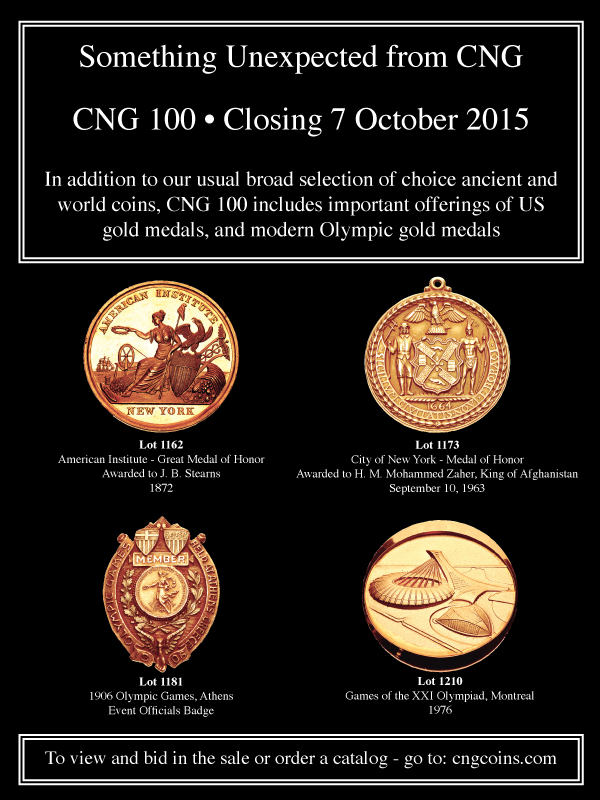
PREV ARTICLE
NEXT ARTICLE
FULL ISSUE
PREV FULL ISSUE
EARLIEST MONEY USING THE DOLLAR AS A UNIT OF VALUE
While looking for mote information on the Lyon Dollar notes, I (not unsurprisingly) found this short article by Eric Newman on the
Chicago Coin club web site, from their Perspectives in Numismatics project. -Editor
To the Colony of Maryland goes the unique distinction of issuing and thus introducing the "dollar" to the world as an official unit of money. In 1767 Maryland changed monetary and numismatic history by printing and circulating paper money in a one dollar denomination and in multiples and fractions of a dollar. That dollar designation was thereafter adopted by the Continental Congress of the United Colonies in its paper money issues beginning in June 1775 and by the Congress of the United States in 1792 for coinage at its soon to be created Philadelphia Mint. The dollar was the unit authorized by several American states for paper money emissions beginning in 1776, in coinage for Sierra Leone in 1791 and for an 1804 Bank of England silver trade coin. The dollar today retains the universal status of being the best known monetary unit, being the basis of many present and past circulating coins and paper money of many countries during the 19th and 20th centuries. The word dollar in 1767 was new only as an official monetary unit, but, as is well-known, was a translation into the English language of the Germanic word Thaler which was originally applied to a large 15th century silver coin of provincial Austria. The Scandinavian countries had translated Thaler into daler or Rixdaler for their currency unit. The word Dollar in the English language was the commercial reference to silver coins of the same general size as the Thaler, but became applicable primarily to Spanish-American silver coinage of the denomination of 8 reales because of the extensive use and circulation of that coinage throughout the world. The piece of 8 reales was more commonly called the Spanish Dollar and after 1732, that expression was often modified to Spanish Milled Dollar to reflect the introduction of edge milling and circular shape to such coinage. The Lyon Dollar or Lion Dollar was the English language expression referring to the large silver trade coin minted in 17th century Holland, bearing the emblem of a large rampant lion, but the Maryland Act of 1708 used the derisive term Dog Dollar in evaluating that coin. For many years prior to 1767, the English words Dollar, Spanish Dollar and Spanish Milled Dollar were sometimes used as the special pricing and special accounting language in America, being a basis for bills of exchange calculations. This distinguished the transactions from money of account trading which related solely to transactions within a particular colony. Sterling was often used in accounting for the same purposes as the dollar. Maryland's dollar paper money was payable in bills of exchange in London at the rate of 4 shillings 6 pence sterling for one dollar. The Maryland paper money of 1767 had denominations of $1/9th (6 pence sterling), $1/6th (9 pence sterling), $2/9ths (1 shilling sterling), $1/3rd (1 shilling 6 pence sterling), $1/2 (2 shillings 3 pence sterling), $2/3rds (3 shillings sterling) and $1, $2, $4, and $8 on the same basis. The sterling conversions to the dollar denominations were clearly printed on the paper money to aid in calculations, but there was no reference whatsoever to Maryland's money of account shillings or pence. Legal tender status was not given to the issue as that would have required a legal tender in Maryland's money of account system. The denial of legal tender status was most unusual in colonial issues but gave the offeree the opportunity to reject the money. The $1 and $2 denominations had illustrations of one or two Spanish dollars as part of their respective designs, just as the Chinese had used pictures of their bronze cash many centuries earlier. Maryland had also used secret marks on its paper money to deter counterfeiting and denominational alteration, but on the few known counterfeits, the secret marks were nevertheless carefully copied. Nature prints were put on the back of the paper money in a continuation of the use of that technique by the Green family of printers, using Benjamin Franklin's invention. To read the complete article, see:

Wayne Homren, Editor The Numismatic Bibliomania Society is a non-profit organization promoting numismatic literature. See our web site at coinbooks.org. To submit items for publication in The E-Sylum, write to the Editor at this address: whomren@gmail.com To subscribe go to: https://my.binhost.com/lists/listinfo/esylum All Rights Reserved. NBS Home Page Contact the NBS webmaster 
|